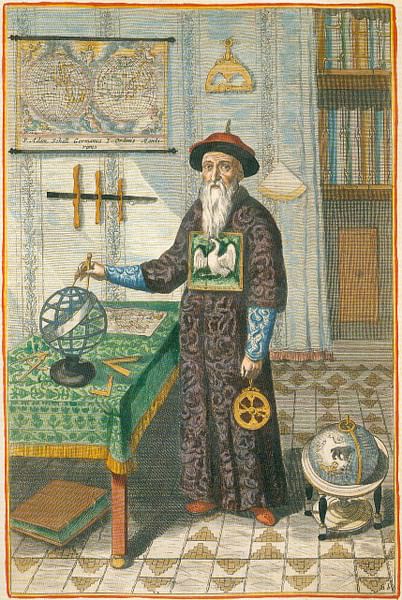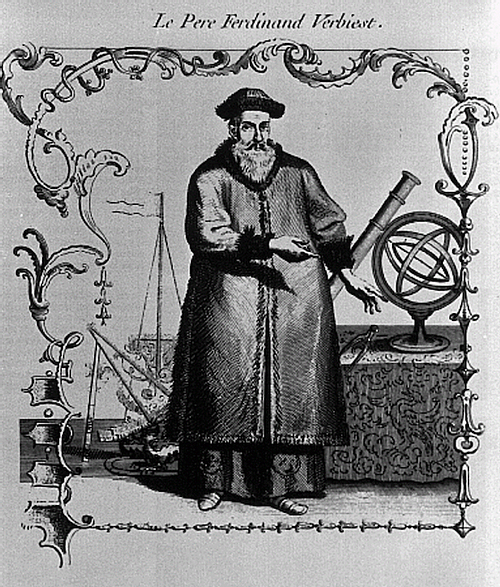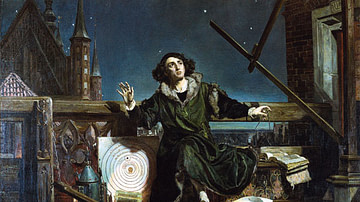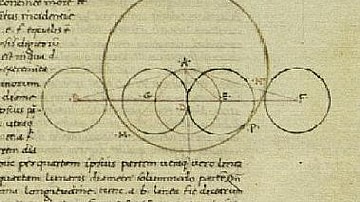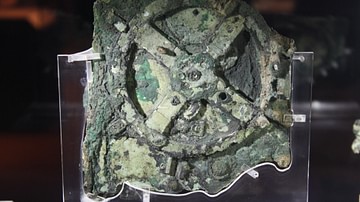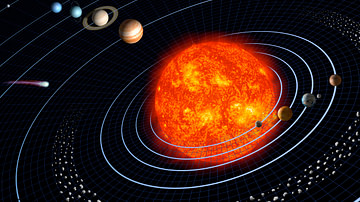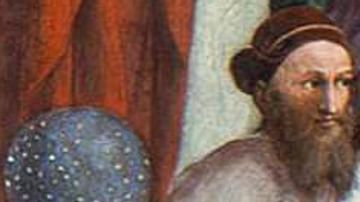Ancient China had seen little Western contact before the 16th century CE, the language, culture and science all being allowed to develop independently of foreign influence. By the time European Jesuit missionaries arrived in the 16th century CE, Chinese science and astronomy were behind in terms of European technological advancement. The Jesuits eventually held important positions at Chinese institutions and introduced new texts, astronomical tables, a new calendar and several new scientific instruments. There is also, however, some debate as to the extent of the Jesuit scholars' influence and the limitations of their own knowledge placed on the development of science in China.
Science & Astronomy in Ancient China
Science before the 20th century CE had a rather different interpretation than that of today; astronomy, mathematics and medicine were all considered sciences but their teachings and practice were not directly comparable to those of the present. Chinese astronomy, in particular, was focused on calendar studies, the study of constellations, movements of celestial objects and astrology with the intention of predicting events that would happen on Earth. In addition to predicting eclipses and other phenomena, astronomy had key roles in timekeeping, calendric and ritualistic functions.
Studies on ancient Chinese science suggest that up till the 14th century CE, major inventions (such as gunpowder and the compass) in China meant that it was much more advanced than Europe in a technological sense. The historian N. Sivin states that 'between the end of the Roman period and 1400 CE or so, a Chinese visiting Europe would have found it in many respects technologically backward' (47). By the 16th century CE, however, European science had quickly surpassed the technology and knowledge of the Chinese and these advances were then brought into China.
Arrival of the Jesuits
The first recorded European influences on Chinese astronomy resulted from the arrival of Jesuit missionaries at the end of the 16th century CE. These educated men, sent by the Catholic Church, were taught the Chinese language and culture. Arriving in China, they exchanged scientific knowledge and ideas, so as to gain a foothold within the Chinese elite with the ultimate goal of spreading the Catholic faith. This occurred at a time when Chinese mathematics and science as a whole were considered to be in a state of decline, therefore the Jesuits hoped they would be able to generate interest from Chinese scholars and improve their standing within the court.
The Jesuits brought with them equipment and knowledge which greatly benefited Chinese astronomy – which had stagnated to the point where astronomers did not even possess the predictive accuracy of Ptolemy over one thousand years before. Matteo Ricci (1552-1610 CE) was the first of the Jesuits to arrive in 1601 CE, which 'may be called the turning point after which Chinese astronomy ceased to remain purely indigenous and began to assimilate Western elements' (Nath Sharma, 348).
Ricci was a scholar who is best known for introducing European scientific works into China and translating them, these included Euclid's Elements of Geometry (considered a founding text of the Western tradition) that subsequently led to improvements in mathematical astronomy. He was also responsible for bringing into China modern astronomical tables, which were comparably much better than those in use by the Chinese at that time.
Reformation of the Chinese Calendar
A key aspect of Chinese astronomy that the Jesuits had direct involvement in was the reformation of the Chinese calendar; the calendar had a key role in almost all of daily life throughout the whole empire and was used for the planning of imperial rituals. The political and symbolic significance of calendric astronomy – 'the Board of Astronomy was subordinated to the Board of Rites' (Petitjean et al, 80) – meant that the Chinese were at first reluctant to allow foreigners permission to develop a new calendar. However, this feat was finally achieved by German Jesuit Adam Schall (1591-1666 CE) in 1644 CE.
Schall had built on the trust previous Jesuit missionaries had earned from the Chinese emperor and his scholars, convincing them to give him permission to construct the orthodox calendar. Schall's work went far beyond that of calendar making however, he was also responsible for bringing into China many astronomical instruments and publishing his observations in Chinese; to the point where he was arguably the most influential westerner in the history of China.
In recognition of Schall's work on Chinese astronomy, he was given the role of director in the Imperial Bureau of Astronomy – successive Jesuits then held onto this directorship for almost 150 years until they left China at the end of the 18th century CE. Schall's successor as director in 1669 CE, Ferdinand Verbiest (1623-1688 CE), was the next Jesuit to play a key role in advancing Chinese astronomy.
Further Influence on Chinese Astronomy
In addition to bringing in western teachings, Jesuits also developed their own knowledge while in China and these observations and calculations were written in Chinese – Verbiest published more than 20 books on astronomy in this way (including a book on the use of telescopes, others on eclipses, star catalogues and a history of European astronomy). He was also responsible for the replacement of old instruments in the Observatory, setting up new bronze casted ones, some of which can still be seen there today.
A separate group of Jesuit astronomers and mathematicians established themselves in Beijing on the request of Verbiest in 1678 CE, as he felt that more material and personal help was needed to aid the Chinese mission. These French Jesuit scholars, after some trouble entering the country, established a house in Beijing in 1700 CE that would develop into an important scientific center. The historian A. Udias suggests that 'although they did not hold any official position, their work was also very significant in the transfer of western science to China' (474).
Apart from having a library and possessing scientific instruments, the French house also operated a small astronomical observatory that was used by the Jesuits to produce a collection of observations. A key figure among the French Jesuit astronomers was Antoine Gaubil (1689–1759 CE), who wrote the first history of Chinese astronomy which was subsequently published in France.
Jesuit Departure From China
The Jesuits finally left China in 1773 CE due to the suppression of the Society of Jesus, but their astronomical work was taken over by four Portuguese ex-Jesuits until 1805 CE. By the time they left however, generations of Jesuits had successfully transferred many aspects of European science into Chinese astronomy. These included the teachings of Euclidean geometry (to better understand the movements of celestial bodies), the computation of planetary motions, the idea of a spherical Earth and methods for prediction of eclipses.
One of the most important additions was that of stereographic projections – to impose the spherical star map that the Chinese used onto a plane – which also incorporated algebraic and computational methods. Many prominent Chinese scholars by this time appreciated the usefulness of Western scientific methods and in particular its accuracy and precision, resulting in the incorporation of Western knowledge into mathematics and astronomy in their works.
The Jesuits returned to China in 1814 CE after the reformation of the Society of Jesus and founded observatories, using them for works on astronomy, meteorology, seismology and geomagnetism. They were allowed direction of these observatories until 1950 CE, when the communist government seized control of them.
Was the Jesuit Contribution Significant?
There are some arguments to suggest that these Jesuits did not actually bring anything new into China. The historian C. Cullen states that 'novel scientific methods brought from Europe…were simply a development based on learning that had travelled westwards from China in previous centuries' (167). This resulted in Chinese scholars realizing that their own knowledge surpassed or was at least equal to what had been achieved in the Western world.
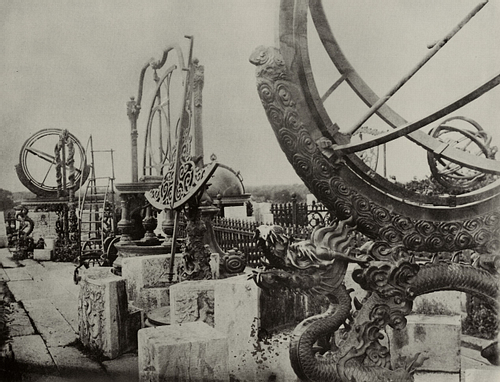
Furthermore, the Sinocentric Chinese believed that they lived in the center of the universe and found it difficult to accept foreign ideologies – this led to many Chinese viewing the Jesuits' knowledge and technology as 'an attack on Chinese claims to moral superiority, an assault on China's self-esteem' (Landes, 12).
Still other argue that the Jesuits were in fact responsible for holding back the development of science in China by basing their teachings on Ptolemy's outdated system, as Copernicus' heliocentric system was banned by the Catholic Church in 1616 CE. Udias stated that the drawbacks of such teachings on Chinese astronomy were 'the exclusive use of ecliptic coordinates and an erroneous doctrine of the precession of the equinoxes' (475).
Due to the fact that the Jesuits held such a prominent role as directors of the Imperial Bureau of Astronomy, it was not until the early 19th century CE when Protestant missionaries arrived that Copernican thought was introduced. These Protestant missionaries came from many denominations and quickly organized themselves once free trade was established in China. They brought in teachings that 'carried the history of Western astronomy from ancient times to the Greeks and Ptolemy; from the Middle Ages to Copernicus, Brahe, and Kepler; and from Galileo and the telescope to Newton and the Royal Society' (Elman, 301) and therefore opened China up to the rest of western science.
From the time the Jesuits first arrived in China up to the communist seizure of the observatories, the contributions of many western astronomers had been successful in incorporating European mathematical and astronomical knowledge into Chinese teachings and culture. In addition, the Jesuits' calculations and observations studied while in China led to many works being published in Chinese that further benefited Chinese astronomy.
